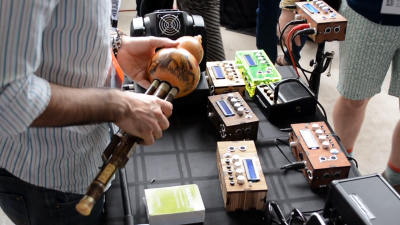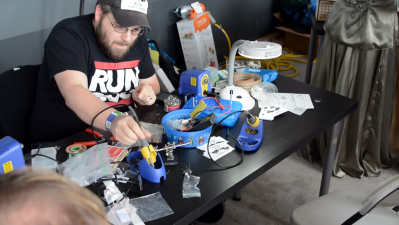Within our community of hackers and makers you may sometimes encounter a belief that we have somehow regained a hold on the workshop lost by everyone else. But while it might be true that some of the general population may barely know one end of a screwdriver from the other it’s a huge overstatement to claim exclusivity. There are plenty of other scenes blessed with an astonishing level of engineering skill and from which breathtaking projects emerge, and it is a great pity that sometimes they exist in isolation from each other.
One such scene is that of car modification. By this we don’t mean the youths with their inadequately powered bottom-feeder cars adorned with deformed plastic, fake carbon fibre and farty exhaust pipe extensions from Halfords or Advance Auto, nor do we mean the silly-priced professional hotrods beloved of certain cable TV reality shows. Instead we mean the ordinary car hackers who take the unexciting and unloved of the automotive world into their garages and through a combination of vision and skill fashion it into something amazing. As an illustration of this art we’d like to introduce you to [ScaryOldCortina]’s “Mayday”. It’s a build from a few years ago, but no less impressive for the elapsed time.

If you are British the chances are your grandparents might have driven an Austin Somerset in the early 1950s. An unexciting mid-sized chassis-based saloon car that wasn’t badly designed but had all the inadequate rust protection you’d expect from a car of that era. A Somerset arrived in [ScaryOldCortina]’s garage that looked solid but turned out on inspection to be rusty enough that it could almost be disassembled with a hefty tug on some of the panels. He could have scrapped it, but instead he refashioned it into something a lot more exciting, a two-seater hotrod roadster. In a particularly impressive touch, he re-used most of the metal from the Somerset in its new body in a different form, for example its curved roof was cut in half to form the side panels of the new car.
The full build is in a very long thread on the Retro Rides car forum. If you read it from start to finish you’ll find an in-depth description of the minutiae of the 1950s British car parts bin, but if that will be a bit much for you we have some highlights.
When the car arrived, in his first post you can see just how far the rust had eaten into an outwardly complete vehicle and how easily he could strip away its panels. Fortunately the Somerset is a chassis-based car, so underneath the rusty bodywork was a rolling chassis which had miraculously escaped the worst of the corrosion. His vision for the car required the chassis to be shortened, but he was able to place the panels on the chassis to get an idea of what it might look line before getting out the cutter and welder and assembling the new body tub. A lot of hard work assembling the running gear into a roadworthy form and making its unlovely Austin “B” series engine into something a little more useful, and he was finally able to take it for a short test drive. The car passed all the relevant tests for British roadworthiness, and made a very cool piece of transport.
Happily though it’s the first to feature so much rust this is not the first Hackaday story involving the hacking of ancient automobiles. We recently had a look at the hacking potential of Volkswagen’s iconic Beetle, we’ve examined the work of professional TV hot-rodders when challenged over their authenticity, we’ve taken a look at Cuba’s surviving pre-revolutionary American cars, and we’ve featured a crazy project involving a Mini and a Toyota Celica.

















